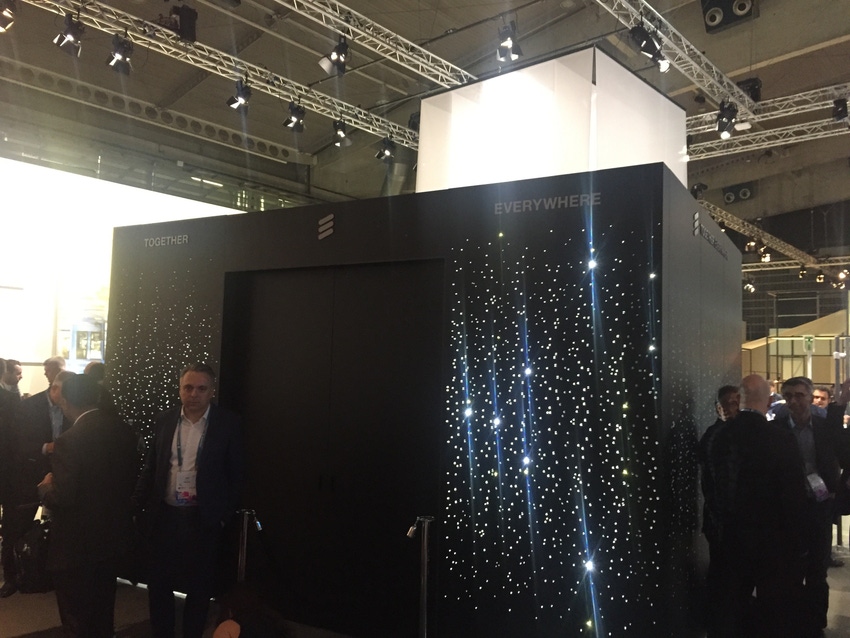Ericsson's big black box full of AI goodness intrigues at MWC 2017
It might sound more like the cry from Brad Pitt at the end of Se7en - "WHAT'S IN THE BOX?!" - but Ericsson's mystery box at MWC gained a fair amount of interest.
February 28, 2017

It might sound more like the cry from Brad Pitt at the end of Se7en – “WHAT’S IN THE BOX?!” – but Ericsson’s mystery box at MWC gained a fair amount of interest.
Your diligent correspondent got a cheeky sneak peek inside Ericsson’s big black box, and revealed was a wall-to-wall, 180-degree Artificial Intelligence project.
While its early keynote saw CEO Ekholm get away without having to answer questioning over Ericsson’s immediate strategic future; senior Ericsson technologists did give Telecoms.com a behind the scenes look into its forthcoming AI proposition. ADA is a network operations piece of AI kit which shows off the burgeoning technology’s ability to observe and project existing network conditions and apply automated solutions to malfunctioning areas of the network.
While it may seem relatively top level on the face of things, where convention dictates that engineers get involved after a fault diagnosis, ADA is able to instantly apply automated solutions, while simultaneously learning how to apply the same fix to similar network conditions in different scenarios. The output, according to Ericsson’s VP and Head of Innovation Diomedes Kastanis, is that you’re left with a helpful ally in the fight against networking malfunctions.
“Machine learning and other artificial intelligence techniques will shape the future of networks,” Kastanis told Telecoms.com. “Inside our Ericsson Chief Innovation Office in Silicon Valley we are accelerating the evolution of the network through four distinctive stages, culminating in the truly intelligent network.
“Today networks are mainly reactive (i.e. ‘I know what happened’) while they are moving towards the next stage they will leverage deep learning to predict future outcomes (‘I know what will happen’). Stage III networks can think beyond their correlative programming and suggest outcome-based scenarios (‘What would you like to happen’). True intelligence comes in Stage IV, where machines can differentiate between correlative and causal, and pro-actively pursue their own choice of outcomes beyond the scope of human programming, and before any problems are noticed by subscribers (‘I can take care of myself’).”
“This is the new best friend of the network operations centre,” Kastanis told Telecoms.com. He also explained that the solution is already operating on existing network conditions and statistic based on real-world networks in the US, and that ADA is ready to be launched as a white label solution in the very near future. So keep an eye out for that.
About the Author(s)
You May Also Like











_1.jpg?width=300&auto=webp&quality=80&disable=upscale)


.png?width=800&auto=webp&quality=80&disable=upscale)